Classics 300 Second Midterm
1/69
There's no tags or description
Looks like no tags are added yet.
Name | Mastery | Learn | Test | Matching | Spaced |
|---|
No study sessions yet.
70 Terms
4.3: Plan of a section of the settlement at Karphi. 11th century BC. 1) Shrine 2) Great House 3) Great House
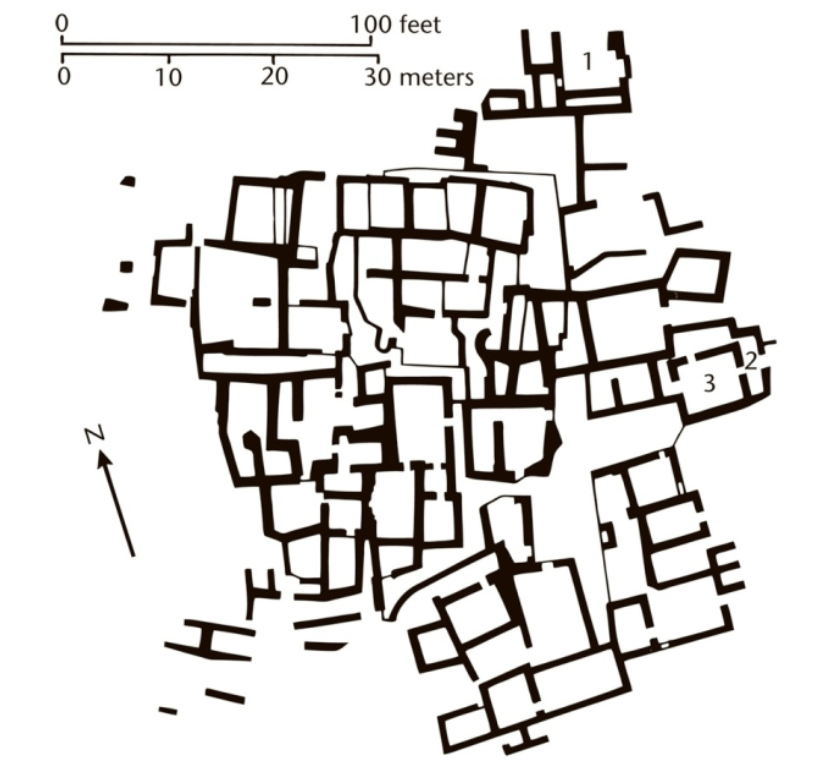
4.4: Female figurine, from Karphi. c. 1000 BC. Terracotta. Iraklion Museum, Crete
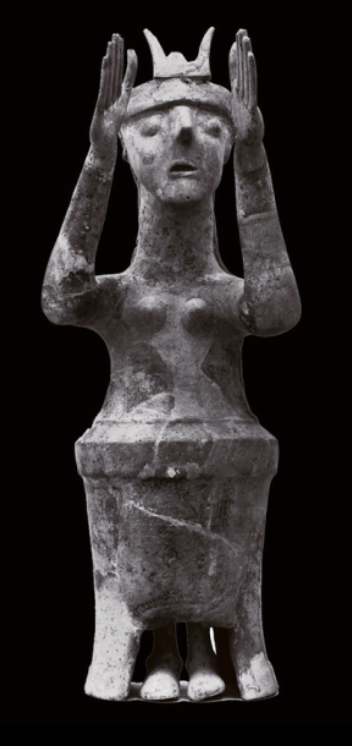
4.7: Reconstruction drawing of the heroon at Lefkandi. 10th century BC
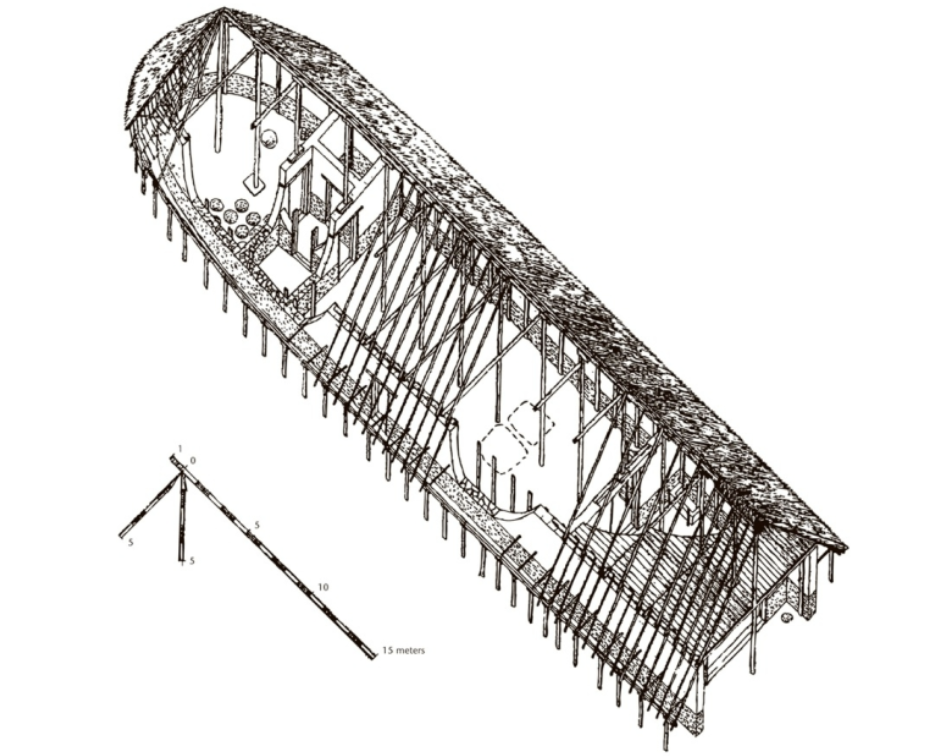
4.8: Model of a shrine, from Argos. Later 8th century BCE. Terracotta. National Museum, Athens
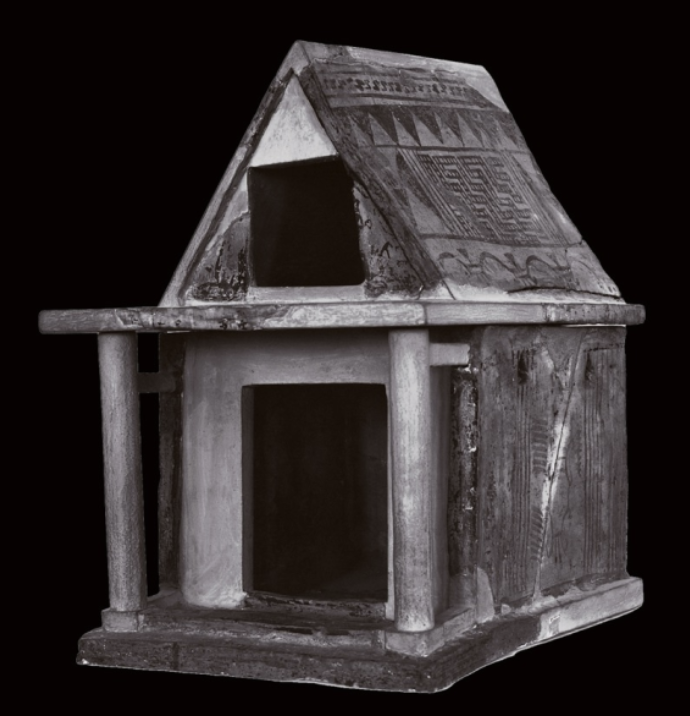
4.11: Statuettes, from Dreros. c. 700 BC. Bronze. Iraklion Museum, Crete
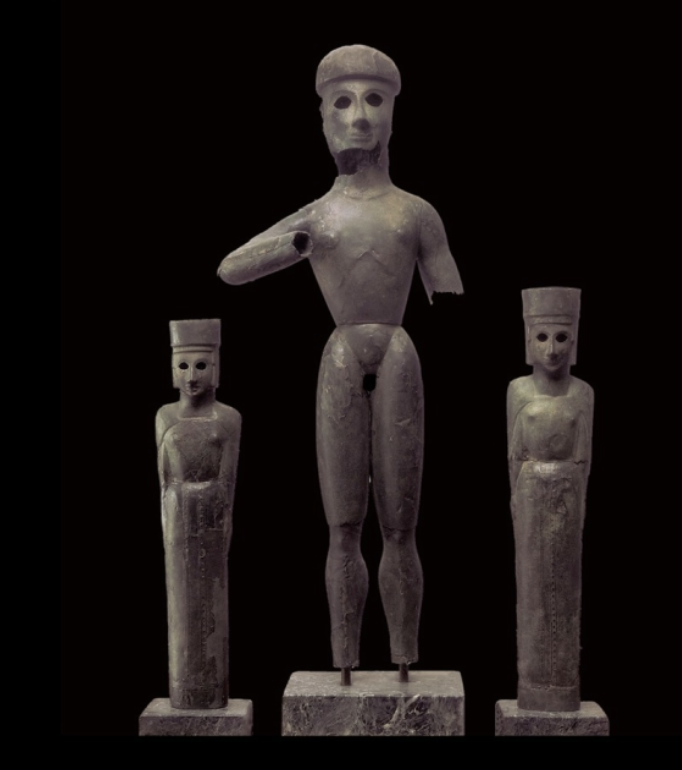
4.13: Centaur, from Lefkandi. 10th century BC. Terracotta. Eritrea Museum
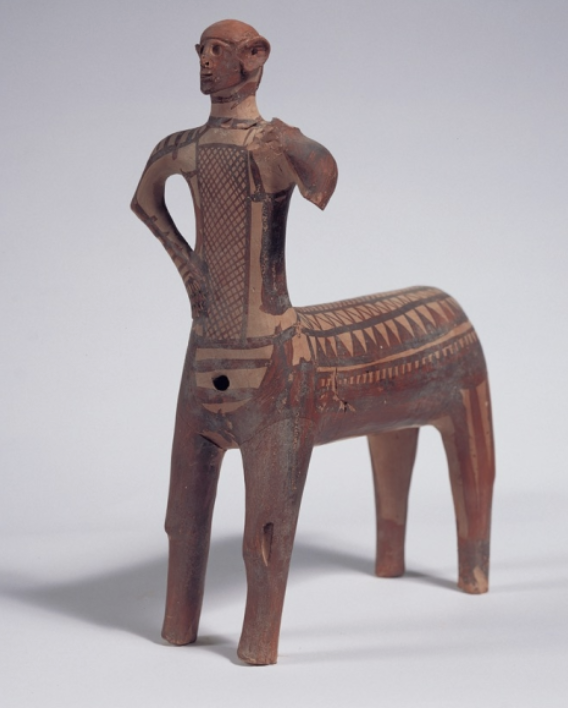
4.23: The procession to the burial ground (ekphora), as shown on Geometric krater. National Museum, Athens
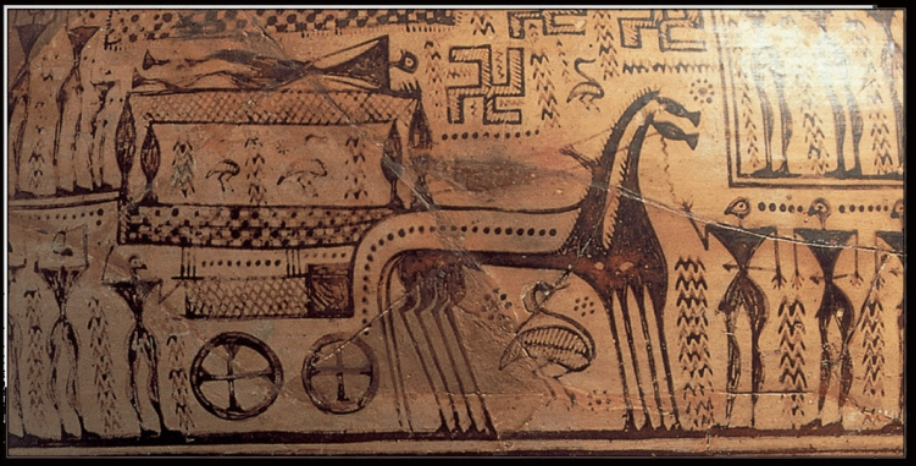
4.24: Geometric amphora, from Dipylon cemetery, Athens, c. 750 BC. National Museum, Athens
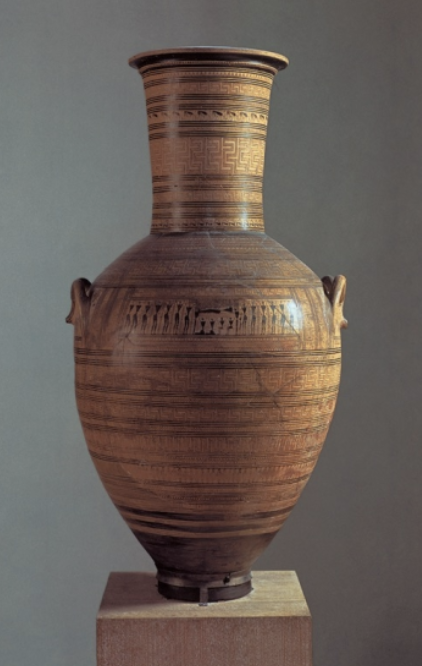
5.1: Proto Corinthian Animal Style olpe. c. 650-625 BC. Staatliche Antikensammlungen, Munich
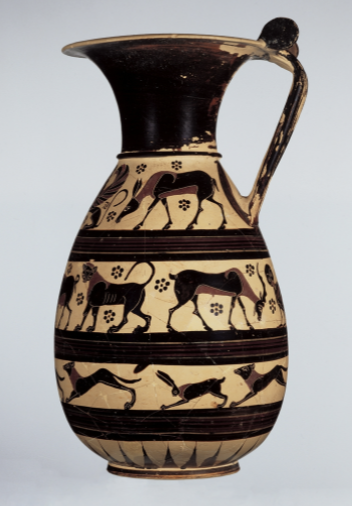
5.3: Proto Corinthian aryballos, the “Macmillan” aryballos. c. 650 BC. British Museum, London
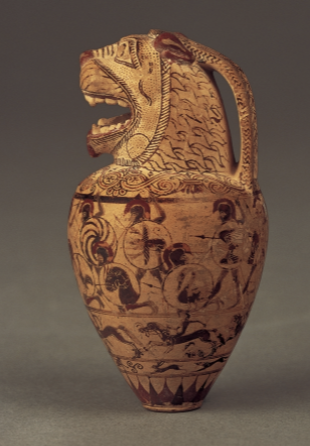
5.8: Protoattic amphora. The Eleusis amphora. c. 650 BC. Archaeological Museum, Eleusis
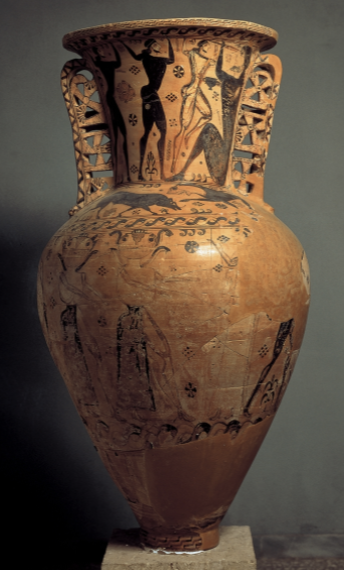
5.26: Griffin protome attachment for a cauldron, from Rhodes. c. 700-675 BC. Bronze. British Museum, London
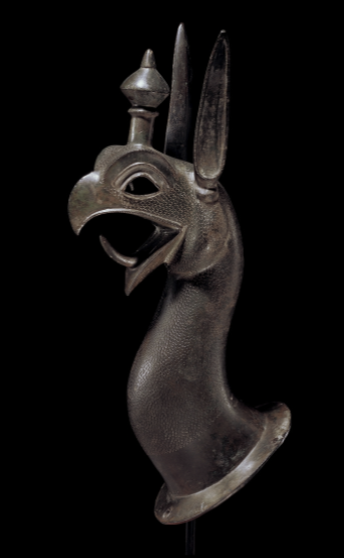
5.28: The Maniklos Bronze, from Thebes. c. 700-675 BC. Bronze. Museum of Fine Arts, Boston
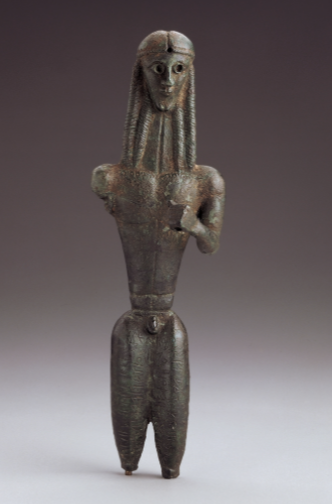
5.30: Figurine of a youth, from Delphi. c. 625 BC. Bronze. Delphi Museum
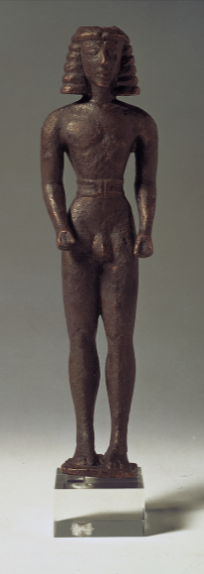
5.31: Torso of a female “Daedalic” figurine. c. 650-625 BC. Terracotta. Iraklion Museum, Crete
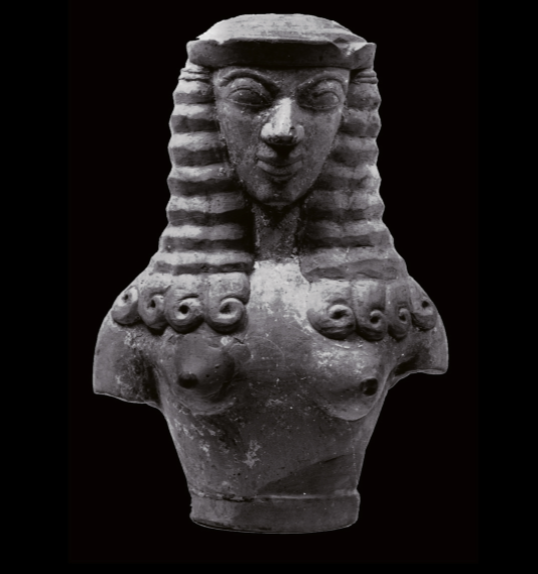
5.33: “Lady of Auxerre” statuette. c. 640 BC. Limestone. Musée du Louvre, Paris
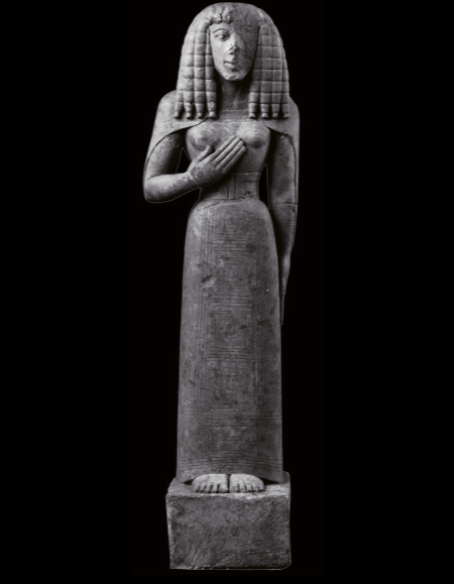
5.35: The Nikandre statue, from Delos. c. 640(?) BC. Marble. National Museum, Athens
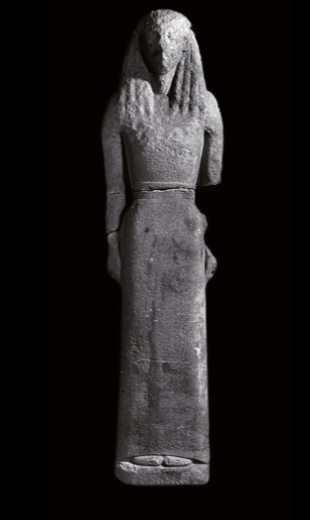
6.3: DECADRACHM, showing (reverse) head of the nymph Arethusa wearing an olive wreath, fillet, earring, and necklace; around, four dolphins and legend: SYRAKOSION (= “of the Syracusans”); (obverse) quadriga and horses walking; above, Nike flies to crown one horse; below, a running lion. From Syracuse, Sicily. c. 460 BC. Silver. British Museum.
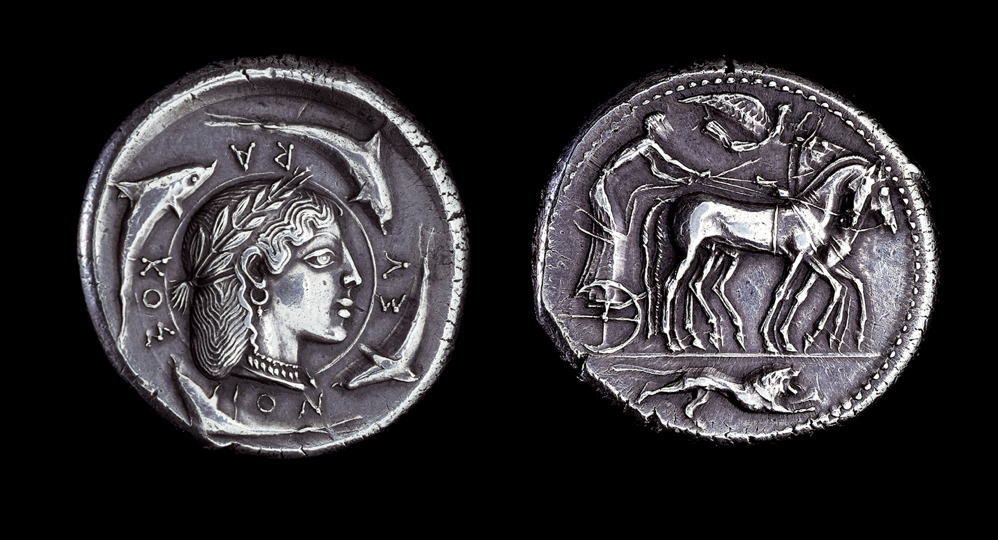
6.8: Temple of Apollo, Corinth, surviving columns from the northwest. c. 560 BC. Limestone with white stucco surface
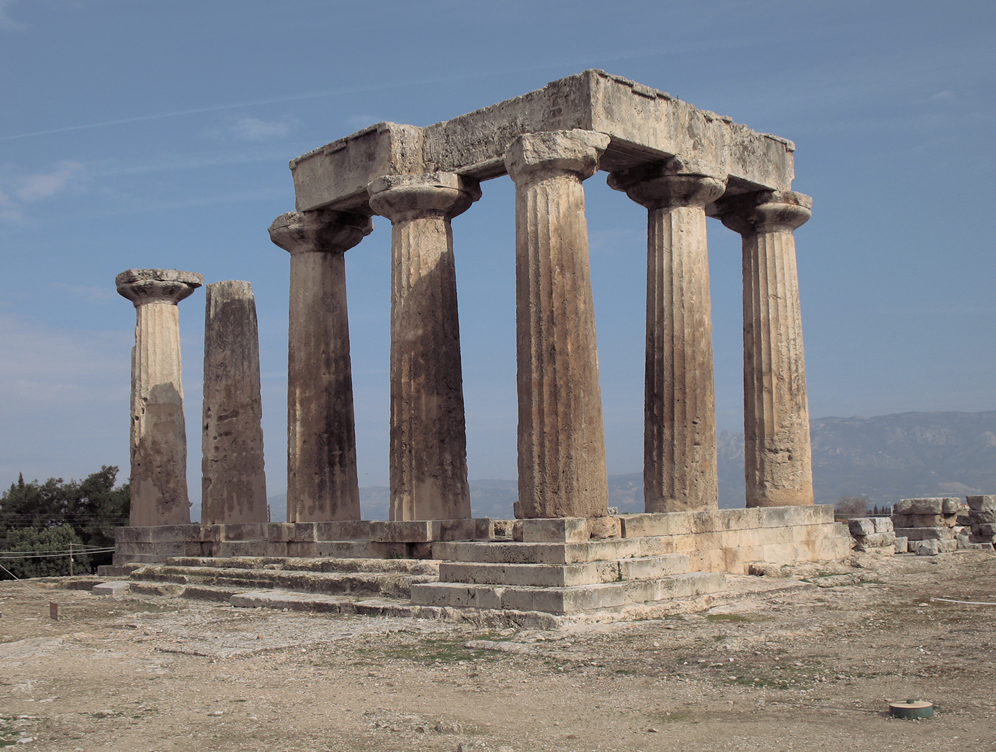
6.9: (a) Restored elevation and (b) plan of the Temple of Artemis, Corcyra. c. 580 BC.
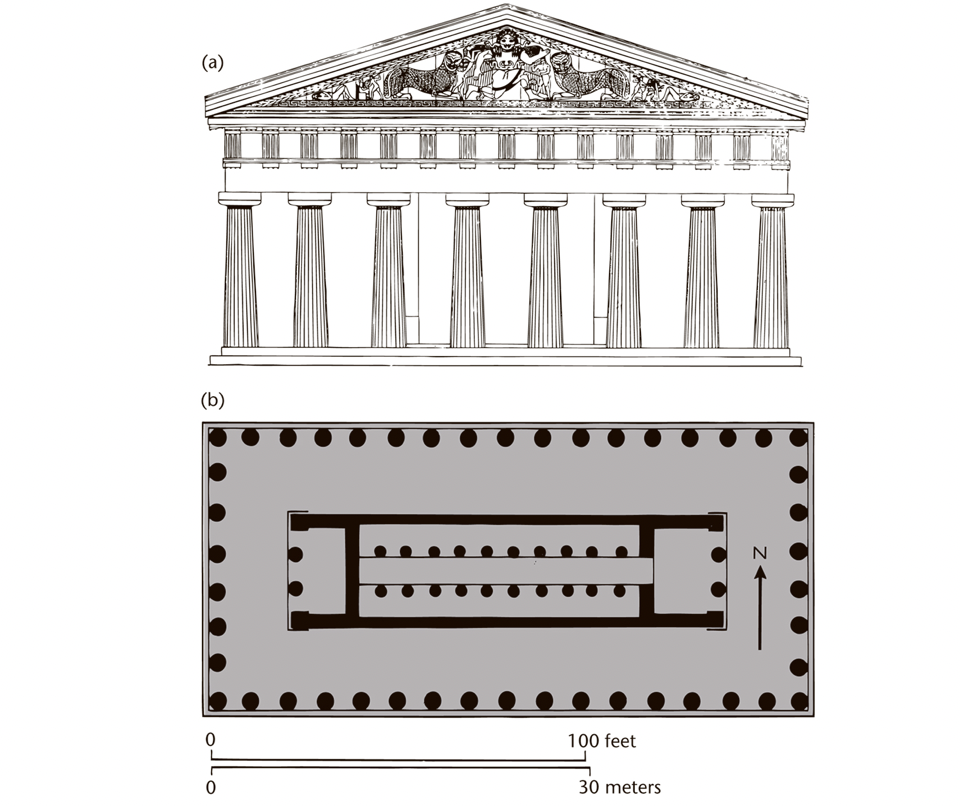
6.21: Metope from the so-called Treasury of the Sikyonians, Delphi: the cattle raid of the Dioskouroi. C. 560 BC. Limestone. Delphi Museum

6.22:Treasury of the Athenians, Delphi, from the east. c. 490-480 BC. Marble
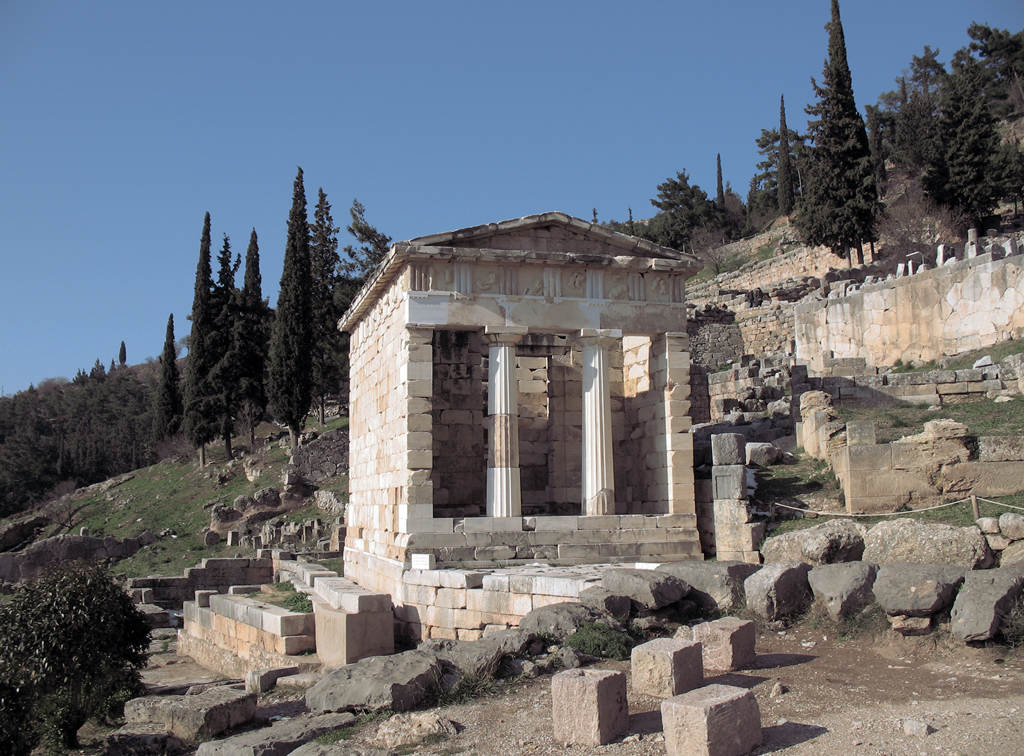
6.24: Perspective reconstruction of the Treasury of the Siphnians, Delphi. c. 530 BC
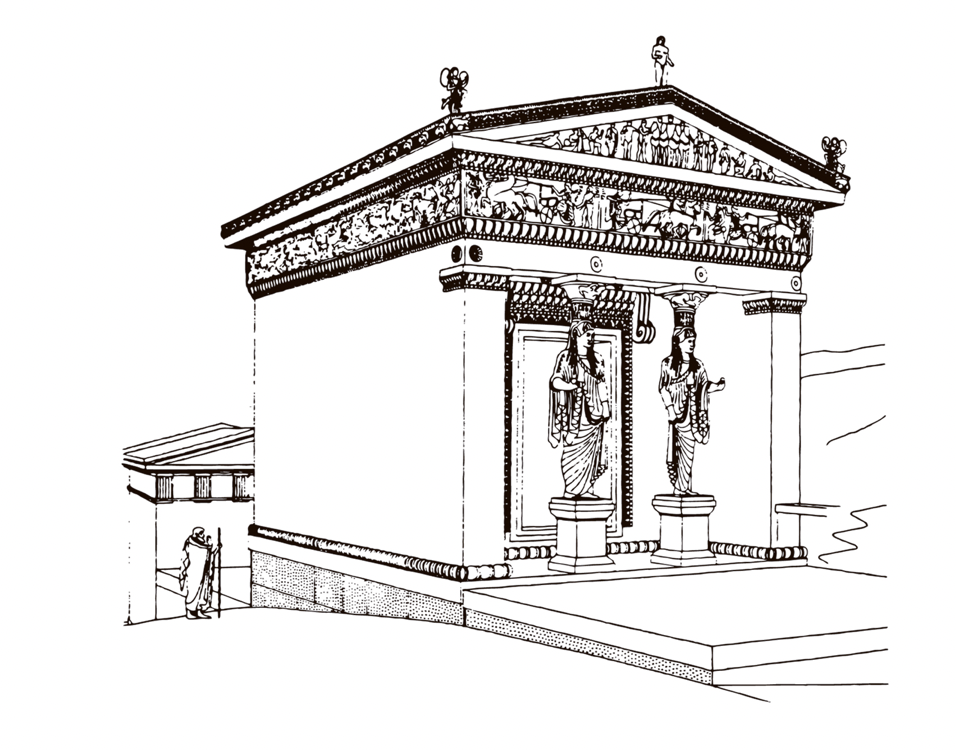
6.25: Treasury of the Siphnians, Delphi, east pediment. c. 530 BC. Marble. Delphi Museum
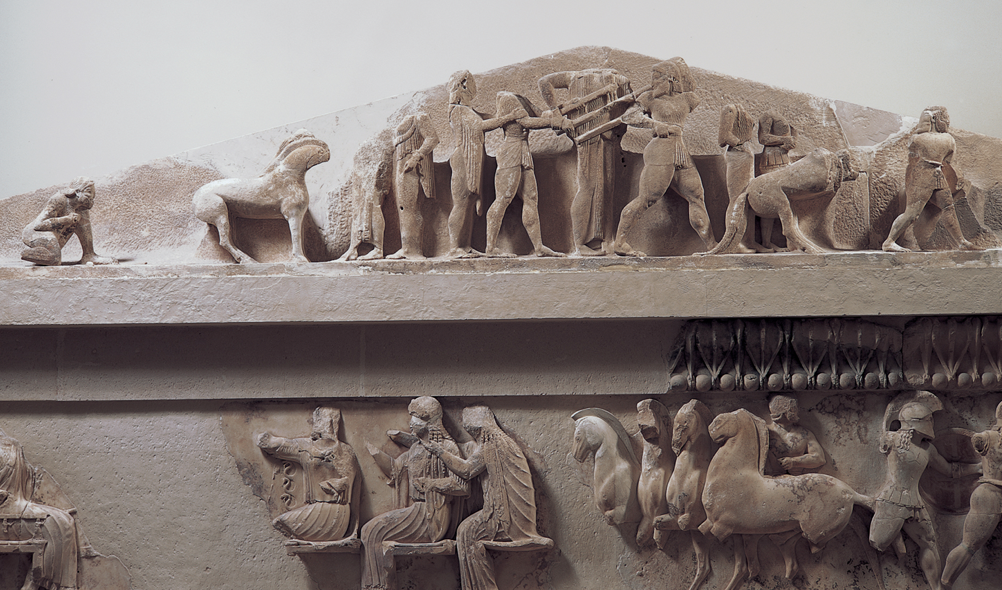
6.35: Temple of Hera I, Poseidonia, from the west. c. 540 BC. Limestone (travertine) and sandstone.

6.41: New York Kouros, said to be from Attica. c. 600 BC. Marble. Metropolitan Museum of Art, New York
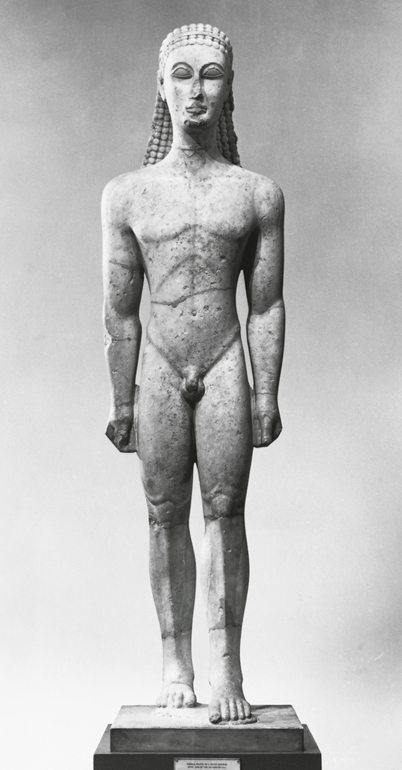
6.45: Anavysos Kouros, from Anavysos, Attica. c. 530 BC. Marble. National Museum, Athens
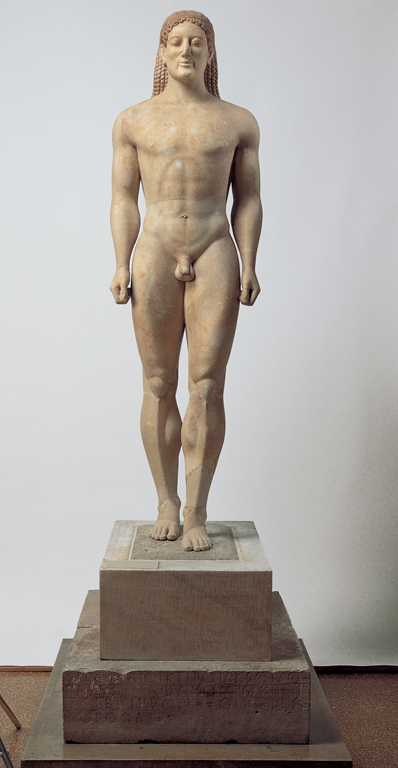
6.51: Phrasikleia, and her inscribed base, from Merenda, Attica. c. 540 BC. Marble. National Museum, Athens
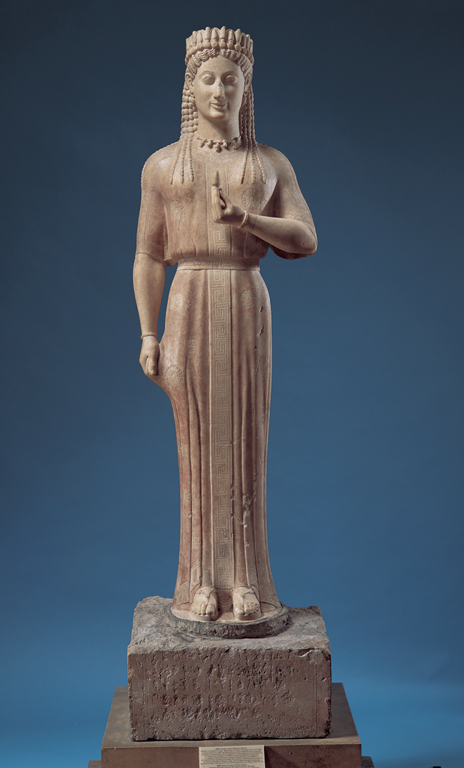
6.52: Peplos Kore, from Athens. c. 530 BC. Marble. Acropolis Museum, Athens
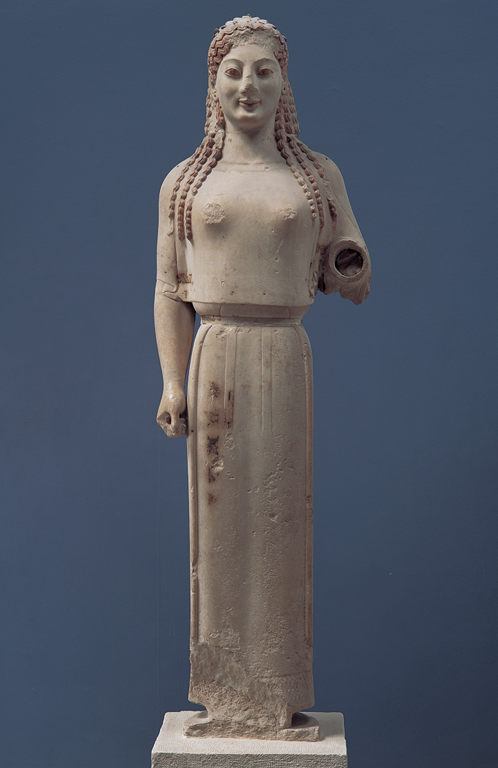
6.55: Getty Kouros. Marble. Getty Museum, California

6.75: François Vase, Attic black-figure volute krater, by Kleitias and Ergotimos. Marriage of Peleus and Thetis. c. 570 BC. Archaeological Museum, Florence
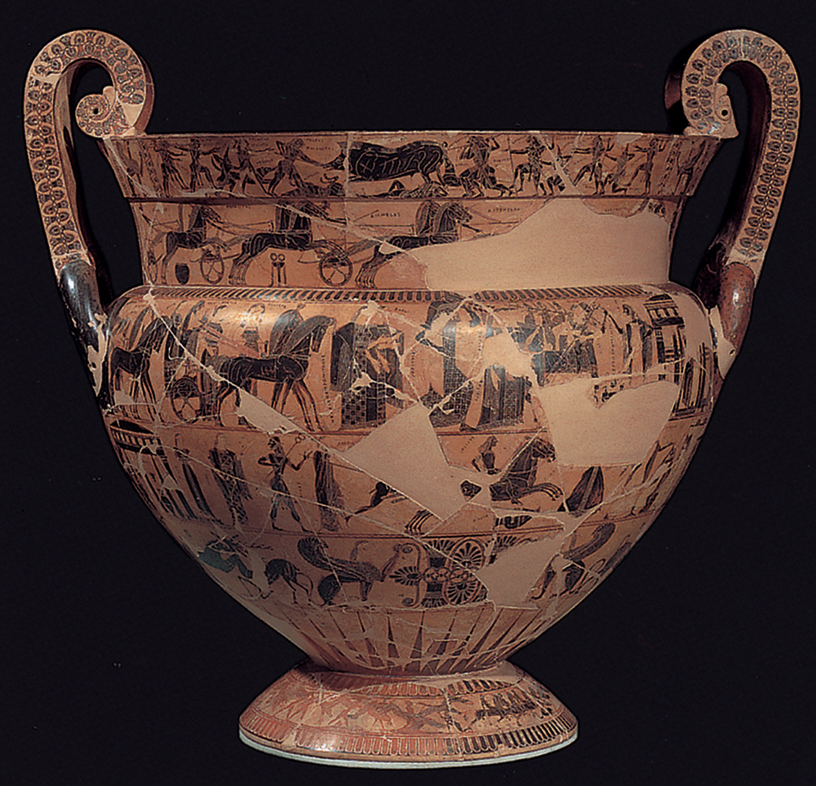
6.78: Attic black-figure amphora, by Exekias. Suicide of Ajax. c. 540 BC. Musée des Beaux arts, Boulogne
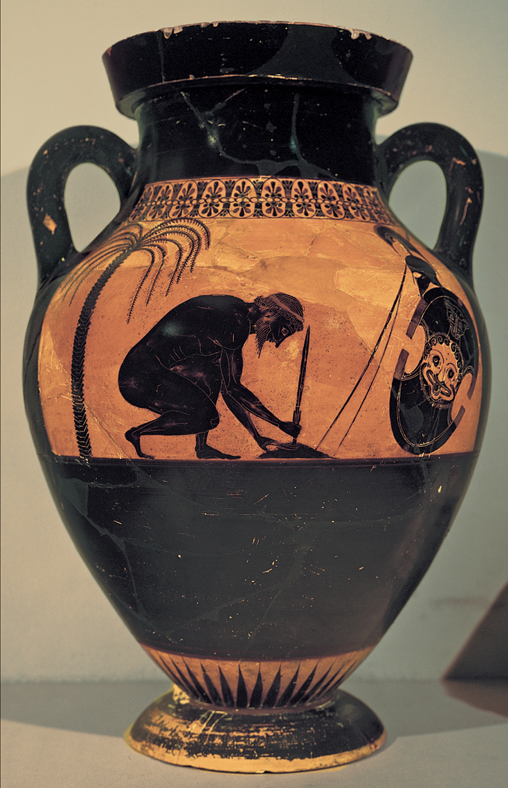
6.89: Attic red-figure calyx krater by Euphronios. Herakles struggling with Antaios. c. 510-500 BC. Musee du Louve, Paris
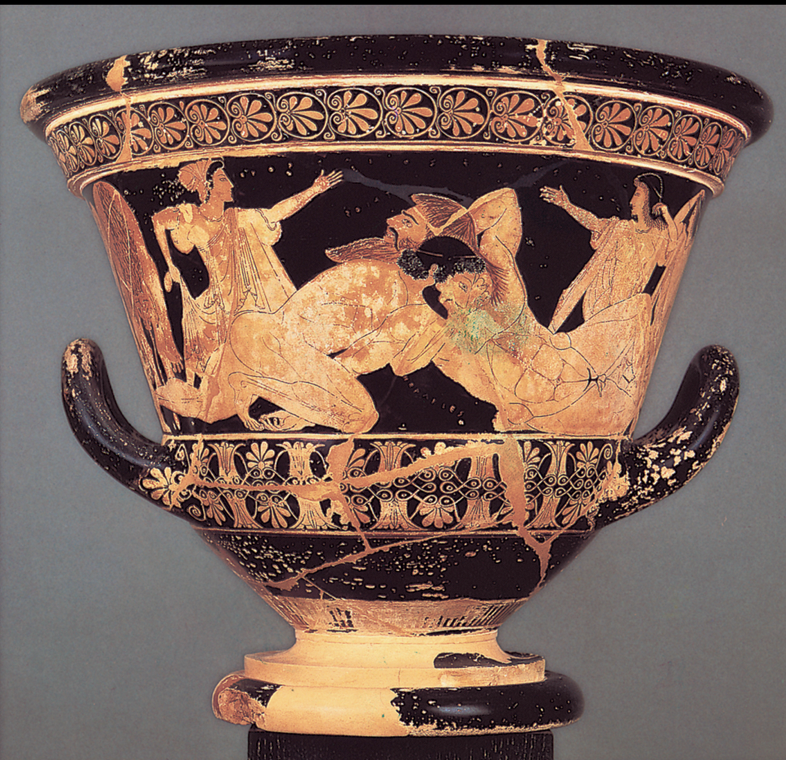
6.90: Attic red-figure amphora by Euthymides: revelers. c. 510-500 BC. Staatliche Antikensammlungen, Munich
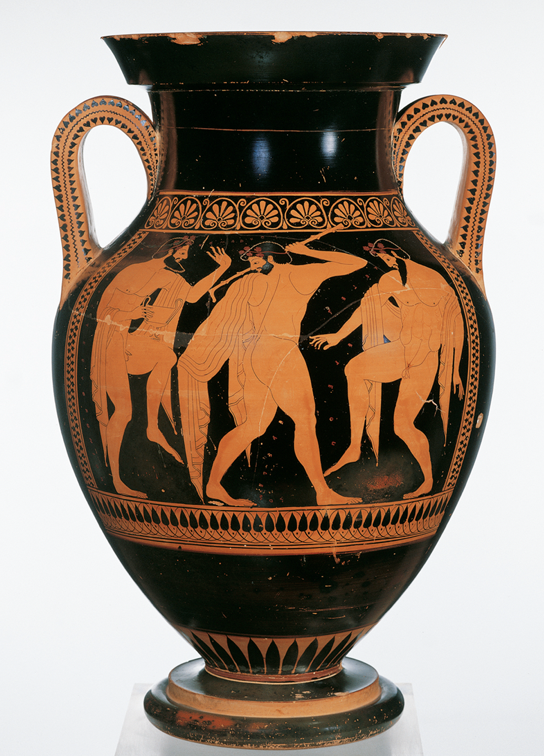
6.92: Attic red-figure amphora attributed to the Berlin Painter: a reveler. c. 490-480 BC. British Museum, London
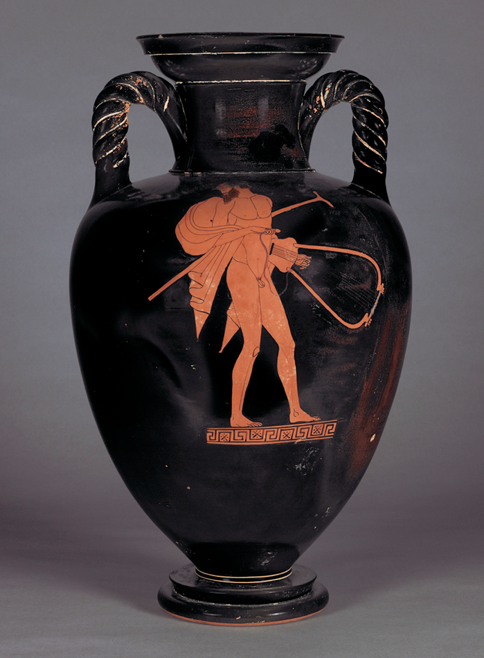
Dipylon cemetery
An ancient cemetery in Athens, Greece, located in the modern suburb of Kerameikos. Graves were marked with vases depending on if the deceased was male or female: kraters for males, and amphorae for females.
Dreros
A city founded during the Geometric period of Greece, known most notably for the “Dreros inscription.” The inscription detailed the constitutional law of Dreros on a block of stone at the temple of Apollo Delphinios.
Ekphora
A stage in Greek funerary process involving the carrying away of a corpse or coffin. This ritual is essentially the funeral procession to a cemetery.
Karphi
A refugee city in Geometric Greece on the north coast of Crete, dated to the 10th century. The city has evidence of faint echoes of Bronze Age skills and traditions during the Dark Ages, though the city plan and dwellings were scrambled and primitive.
Lefkandi
A village on the island of Euboea where the stone foundations of a large heroon building were discovered with an adjacent cemetery dated to the 9th century BC, a century younger than the heroon, which dated to the 10th century BC. This village is important because of evidence of continuous occupation of the site throughout the dark period, providing key insights into the transition of Greek society from the Bronze Age through to the Iron Age.
Pithekoussai
An ancient Greek colony founded in the early to middle 8th century, making it among the oldest of the Greek colonies. Located on the island of Ischia off the coast of Naples, Italy.
Prothesis
Meaning “setting forth” or “placing before. Refers to the funerary process of lying out a corpse that allows for viewings to friends and family.
Samos
Greek island located in the eastern Aegean, home to the first Sanctuary of Hera built sometime around the 8th century BC.
Sphyrelaton
A technique used in making sculpted figures. This could be done by different methods, either hammering thin metal sheets over a wooden core, or by embossing from the interior with a hammer.
Aryballos
A small flask that is spherical or ovoid in shape. The purpose of this flask is typically for holding oil or perfume.
Daedalic
A style of sculpture that was popular during the early Archaic period. Characterized by the "archaic smile," triangular "wig-like" hair, and large, almond shaped eyes.
Metope
The space between two triglyphs in a Doric frieze, sometimes filled with a block carved with relief sculpture.
Nikandre
A part of the Doric frieze: an upright, grooved block with three vertical bars in relief. Conventionally thought to represent the translation into stone of carved carpentry prototypes.
Peripteral
A term in Greek architecture referring to a temple-style building having a single row of pillars on all sides. Original Greek meaning is "around wing."
Protome
A thing that is attached to something and protrudes outward. Typically an animal or human head that is independent of a body.
Thermon
A significant archaeological site home to the Temple of Apollo around 625 BC. Serves as an example of one of the earliest developed Doric temples, and is significant to the study of Greek Architecture for the transition of using mud bricks and wood to the use of stone in buildings.
Triglyph
An upright, grooved block with three vertical bars in relief in a Doric frieze. Conventionally thought to represent the translation into stone of carved carpentry prototypes
Amazonomachy
A legendary battle in Greek mythology in which the ancient Greeks battled the Amazon, a nation of all-female warriors. This mythological battle is often depicted in Greek art
Anavysos kouros
Life-size (1.94 m) statue of a man from Anavysos, Attica c. 530 BC. Meant to represent an ideal male youth in his prime.
Black-figure
Style of Greek pottery painting that originated in Corinth around 700 BC. Painted figures and motifs were added that turned black while firing, with a background that remained the color of the clay.Caryatid
Caryatid
A term coined by Roman architect Vitruvius referring to a sculpture of a female figure in a column supporting the entablature of a building. Caryatids were probably called Korai or Kore by the ancient Greeks, terminology that meant an unmarried woman.
Entablature
Horizontal members forming the super structure of a building above the columns in ancient Greece. Consists of the Architrave, frieze, and cornice.
Entasis
An architectural term for the "cigarlike" swelling of columns. This style intends to correct the visual illusion of concavity perceived from a straight shafted column.
Euphronios
A celebrated potter and painter who worked in Athens between about 520 to 470 BC. He is known for his work in the red-figure style, and was one of the first known artists who signed his name on his work.
Exekias
A celebrated potter and painter who worked in Athens between about 545-530 BC. He is well known for his mastery of black-figure style pottery, and his creative compositions such as the suicide of Ajax.
Ionic
One of two architectural orders designed and observed in the Archaic period. The Doric order was more sturdy and unified stylistically compared to the Ionic Order. It was popular on the Greece mainland and among Western Greeks.
Kleitias
The name of the person who painted the François Vase. Both the painter (Kleitias) and the pottery (Ergotimos) signed their names in inscriptions on the volute krater.
Kore
Sculpture of a standing female figure that is draped in cloth. The word Kore comes from the Greek word “young woman” or “girl”
Lydia
A foreign kingdom in Asia Minor with strong contact with Greek cities to the west. There was mutual influence from both cultures, including Greek adoption of coinage from Lydians.
Opisthodomos
A chamber or porch located in the back of a Greek temple. Though the exact function of opisthodomos would vary between each temple, it could be used for storage of valuable or sacred items, as a secondary area for worship, or as a treasury.
Phrasikleia
Name of a woman who died before marriage. A kore statue of her was created, with the base inscribing a funerary epigram detailing the name gifted to her by gods in place of the name she would have received when she married.
Pseudo-dipteral
The architectural term for a plan of a building showing a row of columns on all sides, with unused space for a second row of columns.
Red-figure
A pottery painting technique that is the exact opposite of Black-figure pottery. The background of the decoration is painted black, and figures are left the color of the clay, with extra details posted with relief lines.
Selinus
A western Greek colony located on the southern coast of Sicily that was destroyed by Carthage. It is best known for its many ruins of Doric temples.
Treasury of the Siphnians
Ionic style building at the Sanctuary of Apollo at Delphi that serves as a chronological marker for the development of Greek sculpture. The building is securely dated with literary evidence dictating that the treasury was built with wealth from the island's gold and silver mines before the island was conquered by Samians in 525 BC and the mines were flooded by the sea.